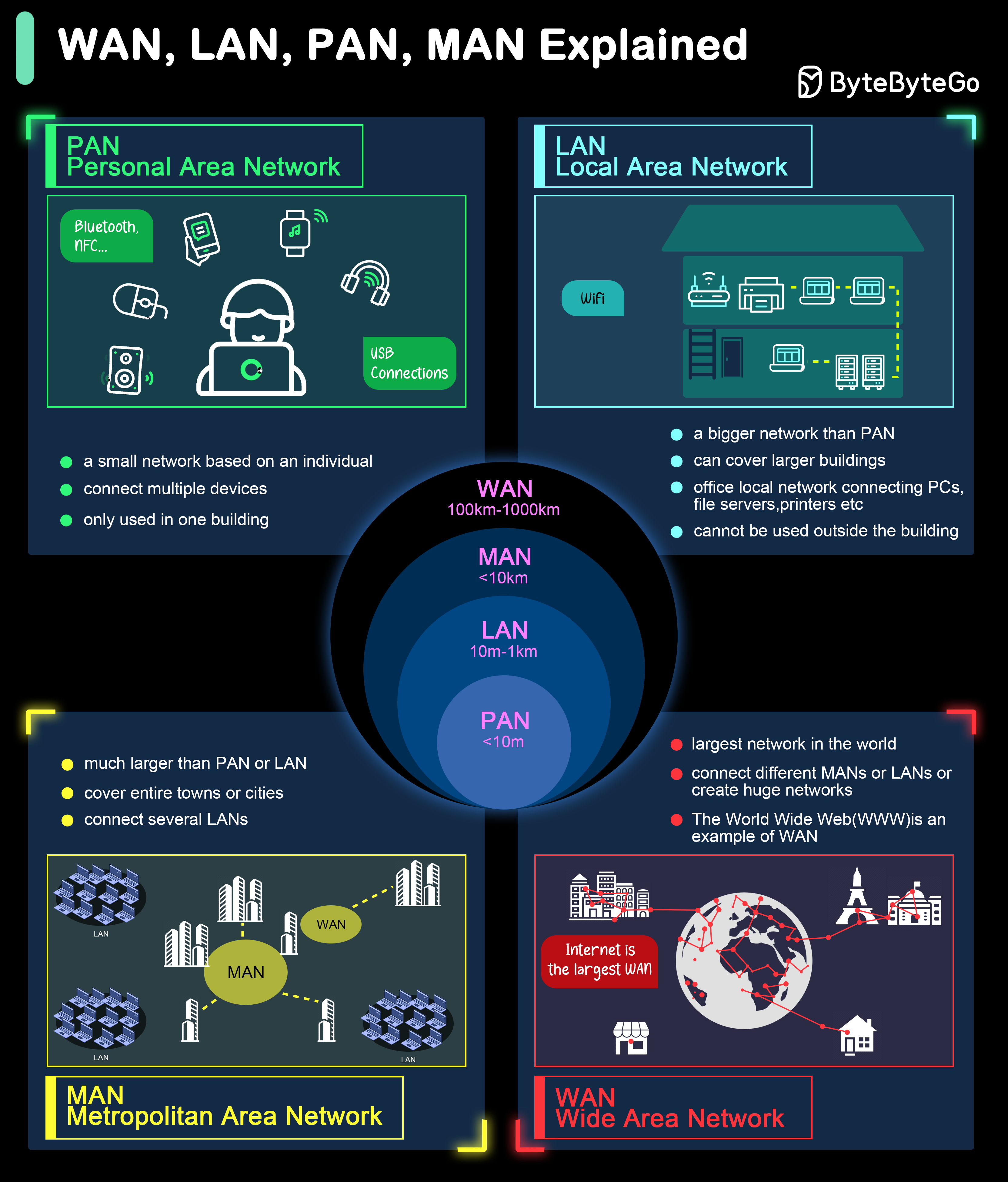Explore the key differences between WAN, LAN, PAN, and MAN networks.

In the world of networking, different types of networks are defined based on their size, range, and purpose. The most common types of networks are WAN (Wide Area Network), MAN (Metropolitan Area Network), LAN (Local Area Network), and PAN (Personal Area Network).
Personal Area Network (PAN)
A PAN is a network used for communication among devices close to one person, typically within a range of a few meters.
Use Cases:
Local Area Network (LAN)
A LAN is a network that connects computers and devices within a limited area such as a home, office, or building.
Use Cases:
Metropolitan Area Network (MAN)
A MAN covers a larger geographic area than a LAN but smaller than a WAN, typically spanning a city or a large campus.
Use Cases:
Wide Area Network (WAN)
A WAN spans a large geographic area, often a country or continent. The most prominent example of a WAN is the Internet.
Use Cases: